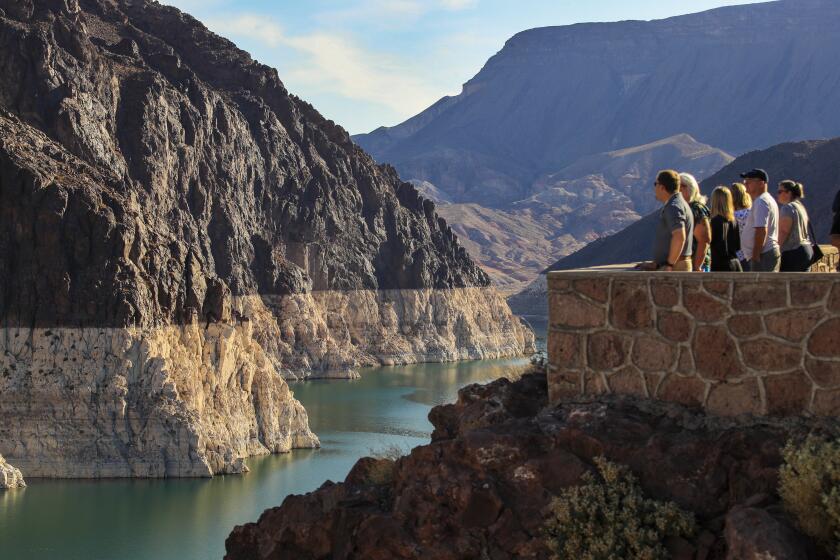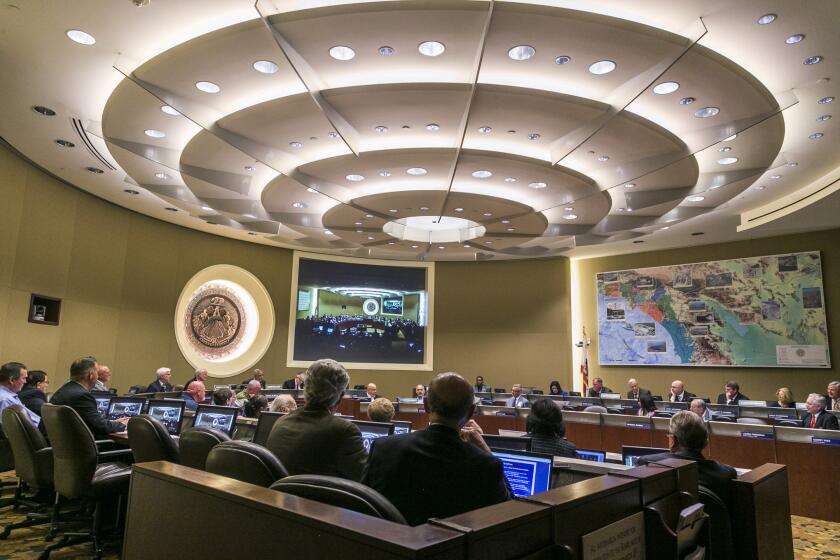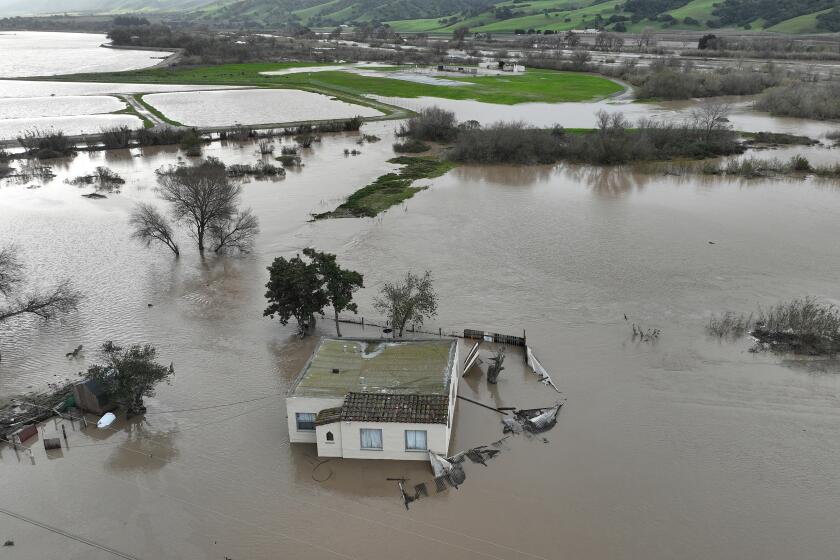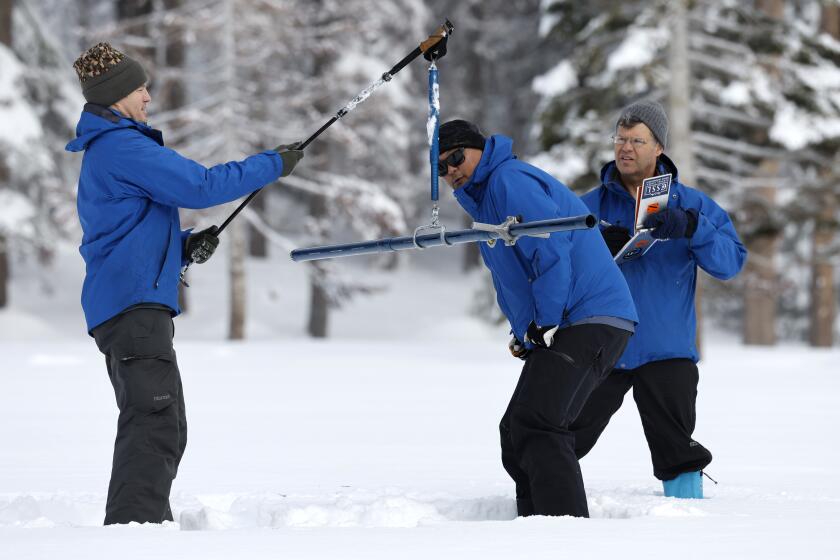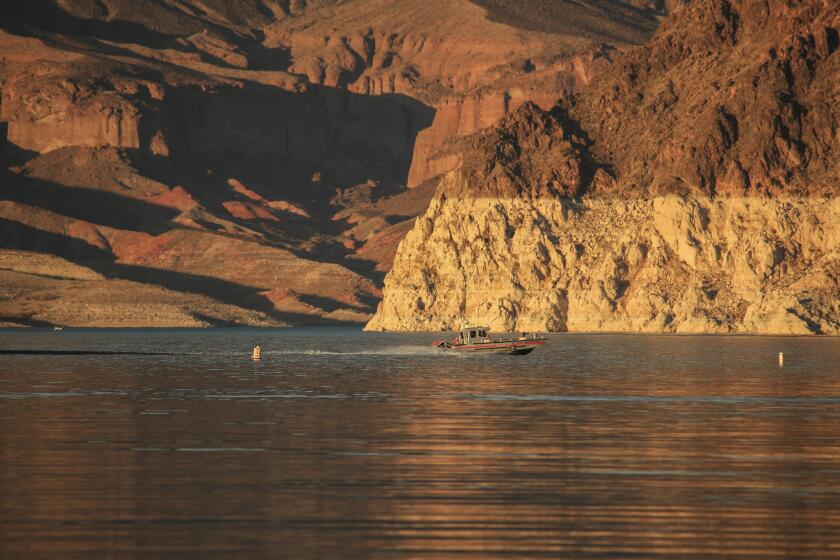You’re already drinking dinosaur pee. So don’t be afraid of recycled wastewater
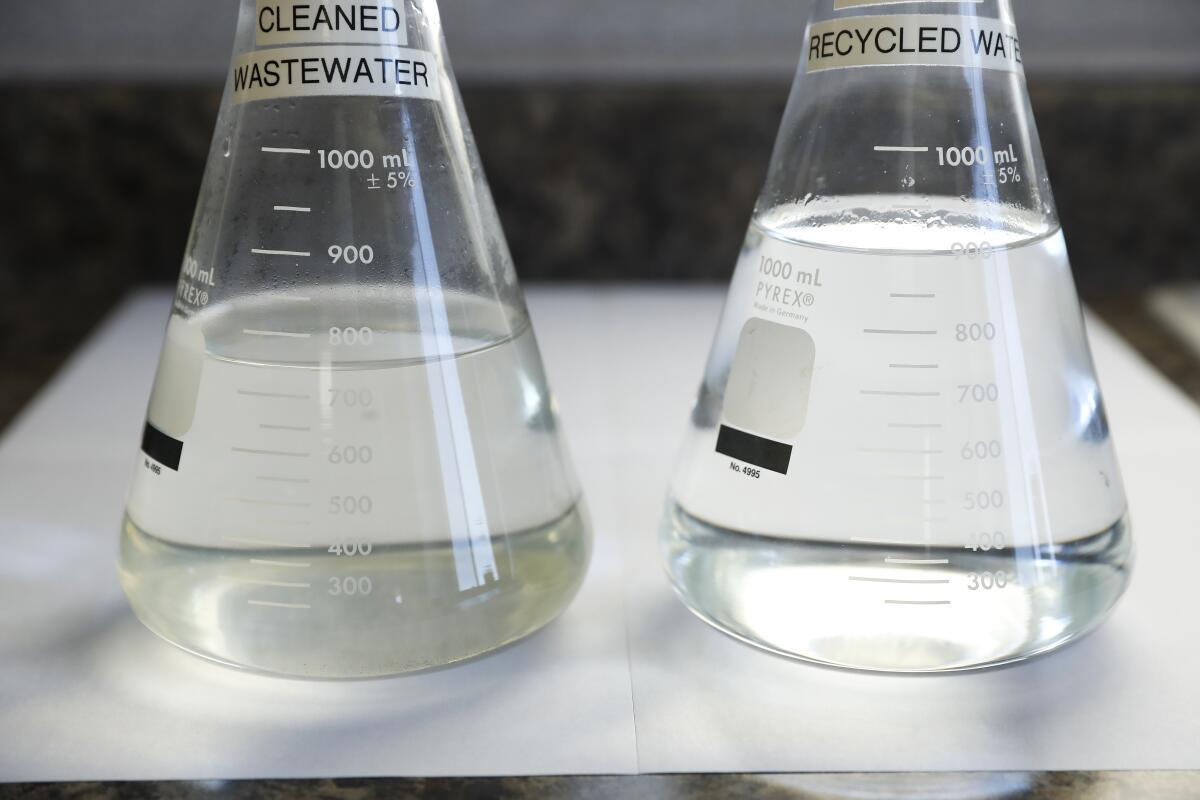
- Share via
Perhaps the biggest development in water over the last three decades has been the change in attitude among consumers about their liquid assets. After repeated droughts punctuated by history-making deluges, Californians appear more open than ever to embracing reuse of stormwater, wastewater and seawater — as long as we can be certain that it is clean and safe to drink.
The public is getting used to the idea that all water on the planet has at some point passed through someone’s or something’s body or encountered some questionable substance on the land or underground. There’s a joke among scientists: We’re already drinking dinosaur pee.
Editorial: Say goodbye to grass that’s only there for looks. California can’t afford to waste water
California’s water supply has become too low to continue irrigating extremely thirsty landscaping at malls, office parks and other places that exist only for looks, not for recreation or other use.
Of course, water that was once stegosaurus urine has been purified by the passage of time and by repeated cycles of seeping into the ground, rising to the surface, evaporating, falling as rain and seeping into the ground all over again.
Yet even water from supposedly pure aquifers or mountain streams must be cleaned before it’s considered safe to consume under modern standards. By the time it gets to the faucet, it’s equally clean whether it last passed through a mammoth millenniums ago or your next-door neighbor last year.
Editorial: Southern California doesn’t have decades to figure out water recycling. We need it now
It’s time for the Metropolitan Water District’s transition from water importer to recycling champion.
California law requires purified water that was recycled from sewage to first be stored in the ground before it can be pumped out and reused for drinking. Even if that procedure doesn’t add a meaningful layer of purification — because it was already cleaned before being stored — the step helped consumers get over the “yuck” factor. They could honestly tell themselves they were drinking water from the ground, and conveniently forget that it was once in the sewer.
That’s how it works in Orange County, a pioneer in the system known as indirect potable reuse. Southern California is the nation’s leader in that type of water recycling.
Letting excess stormwater inundate carefully managed low-lying areas would be good for California’s natural ecosystems and a large, thirsty population at risk from water shortages and flooding.
But if recycled wastewater is being cleaned anyway to a level of purity that had never before been distributed to household taps, why go to the expense of first putting it in the ground? It makes more sense to put the water directly into water supply or upstream of a water treatment plant.
This process is known as direct potable reuse.
It was never the right word for the West’s water woes. We are deep in water debt and a single wet winter isn’t going to make us flush again.
Under state legislation passed in 2017, the Division of Drinking Water of the State Water Resources Control Board is drafting regulations to govern direct potable reuse and must complete them by the end of the year.
It’s an important step forward in securing ample high-quality water for Californians at a time when the Sierra snowpack is no longer reliable year to year, the Colorado River is drying up, Owens River water is needed to protect Mono Lake, and Sacramento-San Joaquin River Delta water is needed to preserve the species that use the system for migration.
The Los Angeles Department of Water and Power and the Southern California Metropolitan Water District have wisely asked for regulations that build in an ample amount of flexibility. Technologies are developing rapidly, as are new discoveries of pollutants that were previously unknown. The institutions that we charge with testing, cleaning and supplying water need to be able to quickly adjust to developing knowledge and needs.
An unusually wet winter and federal largesse helped create a short-term Colorado River accord and gave California time to prepare for the hammer drop in 2026.
Yet regulations must be sufficiently stringent to minimize any chance of a mishap. It would take only one filtration plant failure to erase the public confidence in water reuse.
And the rules should be clear on what is to be done with all the gunk that is extracted from wastewater. Organic matter is generally safe to add back to the soil, but what about all the salts, chemicals, metals and microplastics? That stuff can’t be left to pollute the land. The new era of water recycling could help California stay hydrated as the planet warms and the water supply becomes increasingly unreliable. If done with care, it could keep the planet cleaner and safer as it makes drinking water more abundant.
More to Read
A cure for the common opinion
Get thought-provoking perspectives with our weekly newsletter.
You may occasionally receive promotional content from the Los Angeles Times.
